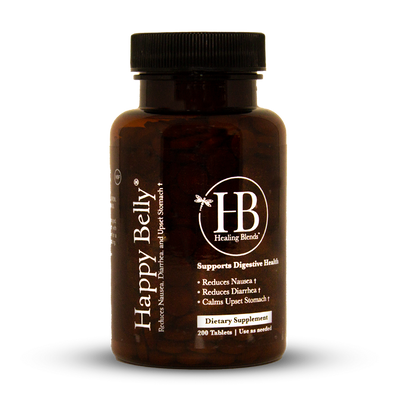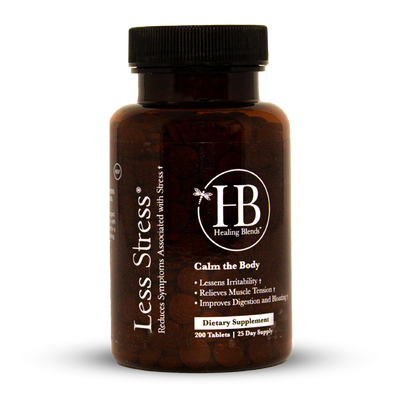Causes and Risks of High HbA1c
HbA1c comes in different names like hemoglobin A1C, glycosylated hemoglobin, glycated hemoglobin. It is a laboratory marker used to assess the long-term levels of blood glucose. The values represent the average of your blood glucose level for the past 3 to 4 months. Unlike random or fasting blood glucose which can fluctuate on a daily basis, HbA1c cannot be manipulated by dieting for only a day or even a week. Thus, doctors find HbA1c as more useful in diagnosing different diseases associated with glucose metabolism.
Causes of Increased HbA1c Levels
Diabetes
The most common indication for increased HbA1c is diabetes. American Diabetes Association uses it as one of the criteria to diagnose the metabolic disorder. Experts use 6.5% as the cut-off value for diabetes. It serves as the reference point for predicting the outcome of diabetes management. Higher values mean that the disease is uncontrolled and calls for a change in the medication and lifestyle of the patient. According to one study published in a peer-reviewed journal, Cardiovascular Diabetology, a value greater than 7% puts an individual to twice the risk for complications compared with those with controlled HbA1c.
Gum Disease
Did you know that by simply treating an existing gum disease, you can actually help lower the HbA1c level? In one study, patients who have received thorough periodontal care have experienced a significant reduction in the HbA1c level. Researchers published their study in the Journal of Clinical Periodontology. Participants were observed for six months and results show that better oral hygiene can help patients in their metabolic control. The 0.5% difference noted among the study group is considered to be crucial since experts say that even a slight decrease in the values can lower the risk of patients to health complications [1].
Sleep Disorders
Apart from diabetes, patients experiencing sleep disorders like poor quality sleep have higher levels of HbA1c. Insomnia and sleep apnea, a condition characterized by pauses in breathing during sleep, lead to uncontrolled blood glucose. The more severe the sleep problem is, the higher is the HbA1c result. Studies show that addressing sleep disturbances in patients with difficulty controlling their blood glucose levels can lead to better results in the HbA1c [2]. Thus, patients should find ways to enjoy longer and quality sleep. Exercise, meditative activities, warm bath, and essential oils are among the natural ways to address sleep disorders.
Overweight and Obesity
People who are overweight and obese are experiencing impaired ability to metabolize glucose properly. Obesity can be measured by higher body mass index, waist circumference, and waist-to-hip ratio. The excess calories are stored in the body and associated with higher levels of HbA1c. Unless the person takes the necessary step to lose some weight, the HbA1c levels may remain elevated and can put a person to a higher risk for diabetes.
Chronic Inflammation
Different laboratory tests can diagnose the presence of inflammatory conditions. One marker commonly used is the C-Reactive Protein (CRP). Patients with elevated CRP levels show higher levels of HbA1c compared with individuals who do not have chronic inflammation. This suggests that one effective method in lowering glycosylated hemoglobin is by treating the root cause of inflammation.
Anemia
Both iron and Vitamin B12 deficiencies are associated with higher levels of HbA1c. The degree of rising depends on the severity of anemia. By treating the underlying anemia, it can help patients reach normal levels of HbA1c. In one study, patients with iron deficiency anemia were treated with 100 mg of iron per day for 3 months. After treatment, the HbA1c decreased significantly. The results suggested that iron deficiency or any type of anemia must be first corrected before any therapeutic decision on HbA1c must be done.
Gastrointestinal Infection and Abnormalities
Any abnormality with the digestive tract including infection is associated with higher levels of HbA1c. For example, patients with Helicobacter pylori infection are at higher risk of having an uncontrolled blood glucose level. In more than 2,000 participants recruited, those with long-term H. pylori infection show higher HbA1c and decreased insulin secretion. Thus, researchers suggest that screening of infection with regular monitoring of blood glucose can help prevent problems with glucose regulation [3].
Health Risks of High HbA1c
High HbA1c indicates that the glucose level in the body is uncontrolled. The excess sugar in the blood leads to oxidative stress that damages different organs of the body. It may also affect the DNA which can potentially trigger gene mutation and cancer. If left unmanaged, excess sugar can lead to several complications. If you are receiving values higher than 7.5%, it should warrant you to take necessary action to lower your glycosylated A1c. Here are some of the problems that you may encounter if you fail to reduce it to normal levels.
Kidney Disease
Nephropathy or damage to the kidneys is one of the most common complications of high HbA1c. The kidneys suffer the most such that many patients end up with end-stage kidney disease. They either require dialysis or worst, a kidney transplant may be the only resort left. Different studies suggest that in order to reduce the risk for kidney disease progression, it is important that HbA1c is well regulated [4].
Cardiovascular Disease
Atherosclerosis which is characterized by the hardening of the arterial walls makes patients prone to cardiovascular diseases. Patients with higher HbA1c experience hypertension and are at higher risk for heart attack. In a systematic review and meta-analysis, results show that there is a higher risk for mortality for people with diabetes when their HbA1c is over 8% while 6% is the cut-off for those without diabetes [5].
Blindness
Uncontrolled blood glucose level leads to damage in the tiny blood vessels supplying the eyes. The result can be devastating since many of the patients experience blurring of vision until eventually, they will lose their sight. Among diabetics, uncontrolled blood glucose is the leading cause of blindness. The best way to protect your eyesight is to keep your glucose level within the recommended target range and as close to normal as possible [6].
Nerve Disorder
Tingling and loss of sensation in the feet and hands are some of the common symptoms of uncontrolled blood glucose levels. If the level of HbA1c remains uncontrolled, the nerves become damaged and patients become more prone to injuries. A study published in the Annals of Rehabilitation Medicine shows that levels of HbA1c are highly predictive of nerve damage among diabetic patients [7].
Fatigue
Contrary to what is expected, people with too much supply of glucose in the body experience easy fatigability. The excess glucose is not properly metabolized to become energy. As a result, simple activities can be too tiring for most patients. Fatigue is a common health problem among diabetic patients which can eventually impact their quality of life. In a study involving 50 type-2 diabetic patients, overall fatigue, general fatigue, vigor score, and emotional fatigue are all correlated with uncontrolled blood glucose. By taking action to properly control HbA1c, a significant improvement in the level of energy is noted [8].
Bone Loss
Age is a known predictor of bone loss and recently, bone mineral density has been correlated as a risk factor for increased HbA1c. In a meta-analysis involving diabetic and non-diabetic patients, various studies show that bone loss is higher among patients with an uncontrolled HbA1c level. Bone formation is inhibited among patients with poor glycemic control. Among postmenopausal women, the risk of bone fracture is also higher among patients with type 2 diabetes mellitus [9,10].
Cancer
Cancer cells feed on sugar. Their fast metabolism and uncontrolled cellular division require food and other nutrients. For as long as there is an excess in the sugar, they have the raw materials to keep on multiplying. Different types of cancer do well in patients with uncontrolled HbA1c. In a systematic review published in the Journal of British Diabetic Association, results show that increasing levels of HbA1c is associated with a higher risk for developing colorectal, female genital tract, pancreatic, and respiratory cancers [11]. The results merit the need for the strict management of glucose levels among individuals especially those with a family history of cancer.
Bottomline
HbA1c is a long-term measure of your body’s sugar level. But apart from diabetes, there are other disorders associated with higher levels. Infection and disorder involving the digestive tract, anemia, chronic inflammation, obesity, and gum disease also contribute to excessively high values. Since the increasing level is associated with health complications like kidney disease, blindness, fatigue, anxiety, depression, and even cancer, it is best to keep HbA1c within its normal level. There are several ways to do it. Doctors should first deal with the underlying medical condition while you can start initiating changes in your diet and adapting to a healthier lifestyle.
References:
- "Treating gum disease lowers HbA1c in type 2 diabetes patients" via MDLinx
- Keskin, Ahmet et al. “Effects of Sleep Disorders on Hemoglobin A1c Levels in Type 2 Diabetic Patients.” Chinese medical journal vol. 128,24 (2015): 3292-7. doi:10.4103/0366-6999.171415
-
Helicobacter pylori infection associated with high HbA1c and type 2 diabetes
Ming‐Chia Hsieh Sophie S. W. Wang Yi‐Ting Hsieh Fu‐Chen Kuo Maw‐Soan Soon Deng‐Chyang Wu. 2013 https://doi.org/10.1111/eci.12124 - Lee, Mei-Yueh et al. “Association of HbA1C Variability and Renal Progression in Patients with Type 2 Diabetes with Chronic Kidney Disease Stages 3⁻4.” International journal of molecular sciences vol. 19,12 4116. 18 Dec. 2018, doi:10.3390/ijms19124116
- Cavero-Redondo I, Peleteiro B, Álvarez-Bueno C, et alGlycated haemoglobin A1c as a risk factor of cardiovascular outcomes and all-cause mortality in diabetic and non-diabetic populations: a systematic review and meta-analysisBMJ Open 2017;7:e015949. doi: 10.1136/bmjopen-2017-015949
- "Blindness" vis Diabetes.co.uk
- Lee, Won-Jae et al. “Correlation Between the Severity of Diabetic Peripheral Polyneuropathy and Glycosylated Hemoglobin Levels: A Quantitative Study.” Annals of rehabilitation medicine vol. 40,2 (2016): 263-70. doi:10.5535/arm.2016.40.2.263
- Kaur, Parminder, S. N. Chugh, Harpreet Singh, Vikram S. Tanwar, Gagandeep Sukhija, & Rekha Mathur. "Fatigue and diabetes mellitus: a prospective study." International Journal of Advances in Medicine [Online], 6.3 (2019): 800-804. Web. 30 Mar. 2020
- Ma, Lili et al. “Association between bone mineral density and type 2 diabetes mellitus: a meta-analysis of observational studies.” European journal of epidemiology vol. 27,5 (2012): 319-32. doi:10.1007/s10654-012-9674-x
- Wang, L., Li, T., Liu, J. et al. Association between glycosylated hemoglobin A1c and bone biochemical markers in type 2 diabetic postmenopausal women: a cross-sectional study. BMC Endocr Disord 19, 31 (2019). https://doi.org/10.1186/s12902-019-0357-4
- Systematic Review Or Meta‐Analysis Relationship between HbA1c and cancer in people with or without diabetes: a systematic review. C. Hope A. Robertshaw K. L. Cheung I. Idris E. English. First published:18 November 2015 https://doi.org/10.1111/dme.13031



























